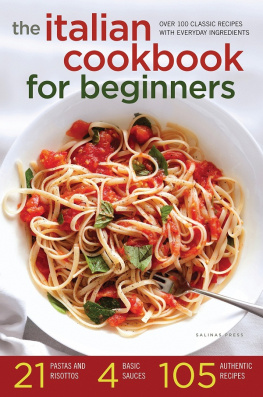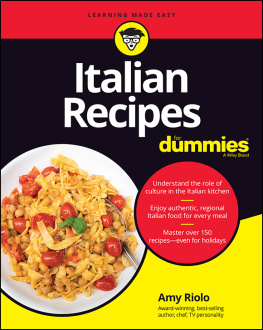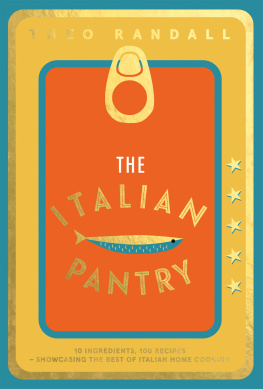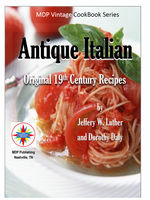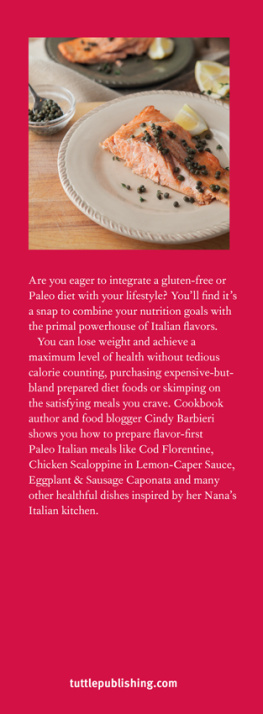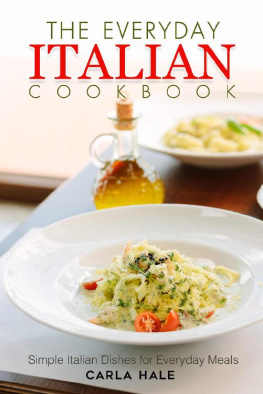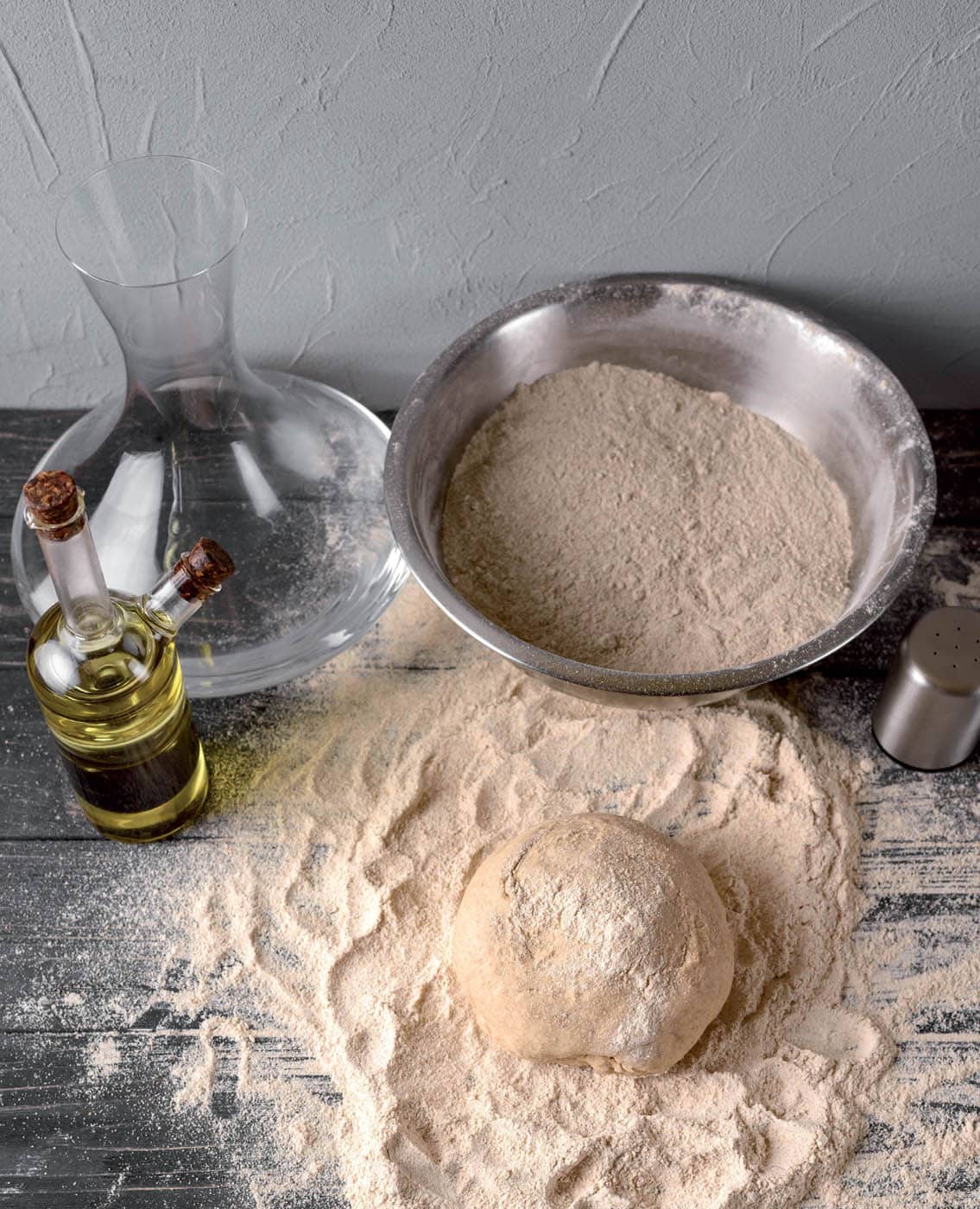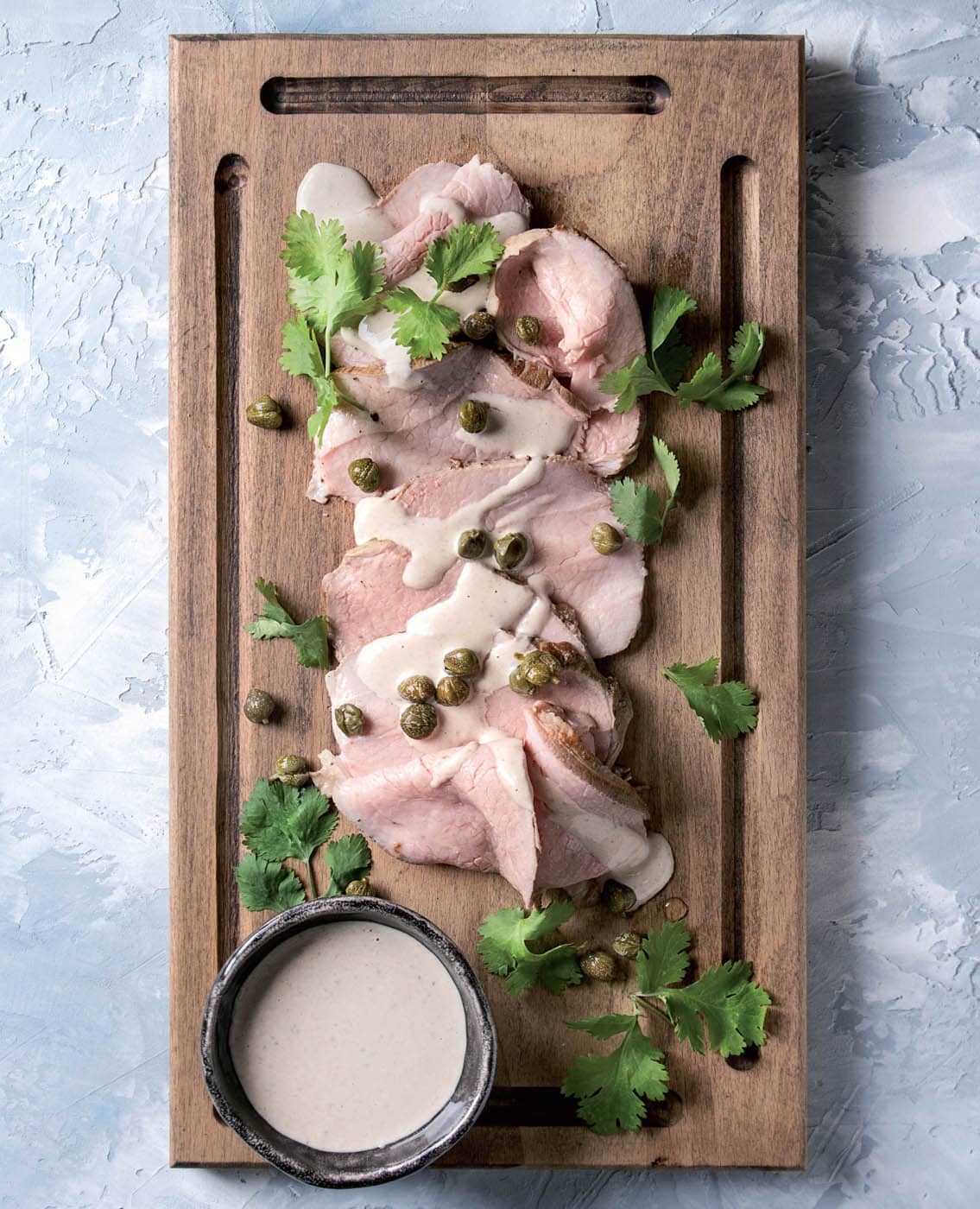Contents
Page List
Guide
Cover
ITALIAN COOKING
for Beginners
ANNA PRANDONI
Simple and Easy Recipes for Weeknights, Parties, Holidays, and More
Contents
Introduction
My mother despises cooking. She always has.
It is an old incomprehensible hate, and like all hates, it is absolute.
At our house, the oven was turned on for the first time when I, after various experiments with my Italian Easy-Bake Oven, insisted on preparing a dish of lasagna. I was already well into my teenage years. Imagine yourself spending your first fifteen years without an oven?
Yes, it was a difficult childhood.
Maybe thats why I now have two ovens in my kitchen and why cooking is my passion, as well as my job.
For years, I envied my friends who cooked with their mothers, who had those worn and slightly greasy notebooks, full of recipes and notes handwritten in pencil by who knows who, who knows when.
Consequently, I started one myself. And because I am a girl with delusions of grandeur, I thought that what I write for myself and my nieces who love cooking would also go well for readers who are hungry for both food and storiesall strictly Italian.
Because our Italian gastronomic tradition is boundless and beautiful, comprised of great products and ancient wisdom, it is really worth the effort to learn it!
You are holding the book of my family recipes, as well as my story. It includes tips for all future good home cooks who will want to challenge themselves with this exciting and endless passionthe great applied art that is cooking while involving their kids as much as possible.
Maybe it will be for my mother, who will change her mind about cooking. And to the boundless emotion that a dish prepared and enjoyed by the whole family gives to who creates it.
Starters
Starters are the dishes with which we welcome guests in Italy.
Usually made with vegetables and delicate in flavor, starters open the palate to the meal that willfollow. They are either cold or warm dishes, and they do not require a lot of effort to prepare.
In my house, in Lombardy, in the north of Italy near Milan, the traditional appetizer was a robust dish of locally made charcuteries, accompanied by the brusco, which is a vegetable vinaigrette preserved in white wine vinegar.
My dad still goes crazy for it today, and I battle with him for the last pickle to wrap with a beautiful slice of coppa. For this appetizer, which is literally called Italian, you cant do without bread, bread sticks, and focaccia.
For children, this is a feast. This dish is informal, and everyone can draw from the platter tirelessly until it is finished. Children also love it because a delicious salami is sliced and eaten until only the peel remains!
Cheese Focaccia
Forget the sweet pastries, which have always been synonymous with breakfast in Italy, and start your day with a meal full of flavor, including a nice square of this delicious steaming and soft focaccia. In the Liguria region of Italy, you can buy focaccia on every corner, but it is easy to prepare at home, and you can enjoy it any time of the day.
PREPARATION TIME: 20 MINUTES + REST TIME COOKING TIME: 15 MINUTES DIFFICULTY: MEDIUM
Serves 4
12 ounces (350 g) all-purpose flour, (approximately 2 cups)
2 pinches fine sea salt, plus more to taste
6 tablespoons (100 ml) lukewarm water
cup (60 ml) extra-virgin olive oil
9 ounces (270 g) crescenza
Mound the flour on a work surface and make a well in the center.
Dissolve 2 pinches of salt in the lukewarm water and pour into the well together with the oil.
Knead until you have an elastic, smooth, shiny dough ball, and place in a bowl, covered with a cloth, and let rest for about 1 hour.
Meanwhile, preheat the oven to 350F (180C, or gas mark 4).
Divide the dough into two halves, and roll out the first half very thin.
Oil a sheet pan.
Lay the dough on the oiled sheet pan. Sprinkle with teaspoon-size dollops of the cheese. Roll out the second half of dough and lay it over the cheese.
Close the focaccia along the edges by folding them onto themselves.
Pierce the surface of the dough with a fork, pour some more oil over the top, and finish with a pinch of salt.
Bake 15 minutes. Cut into slices and serve warm.
Crescenza, stracchino, are Italian fresh, rindless cheeses made from whole cows milk. You can buy them in specialty stores and online, but if you cant find them, you can substitute 6 ounces (170 g) cream cheese mixed with 3 ounces (100 g) mascarpone, sour cream, or goat cheese.
Veal in Tuna Sauce
Originally from Piedmont, this recipe is typical of my Saturday lunches. My version of Vitello tonnato is what a friend of my grandmother, Ms. Castiglioni, wrote for me on a slip of paper a lifetime ago. Ive kept that paper in my wallet ever since. To enjoy it at its best, you need to drown the meat in tuna sauce and eat with lots of bread.
PREPARATION TIME: 45 MINUTES COOKING TIME: 40 MINUTES DIFFICULTY: MEDIUM
Serves 6 to 8
1 stalk celery, diced
1 carrot, diced
2 onions, finely chopped
1 clove garlic, unpeeled
A few sprigs of fresh, flat-leaf parsley
2 cloves
2 dried bay leaves
3 juniper berries
A few black peppercorns
1 veal tenderloin (28 ounces, or 800 g)
For the tuna sauce
3 egg yolks
Tip of a teaspoon Dijon mustard
Sea salt, to taste
2 cups, plus 5 teaspoons (500 ml) vegetable oil


